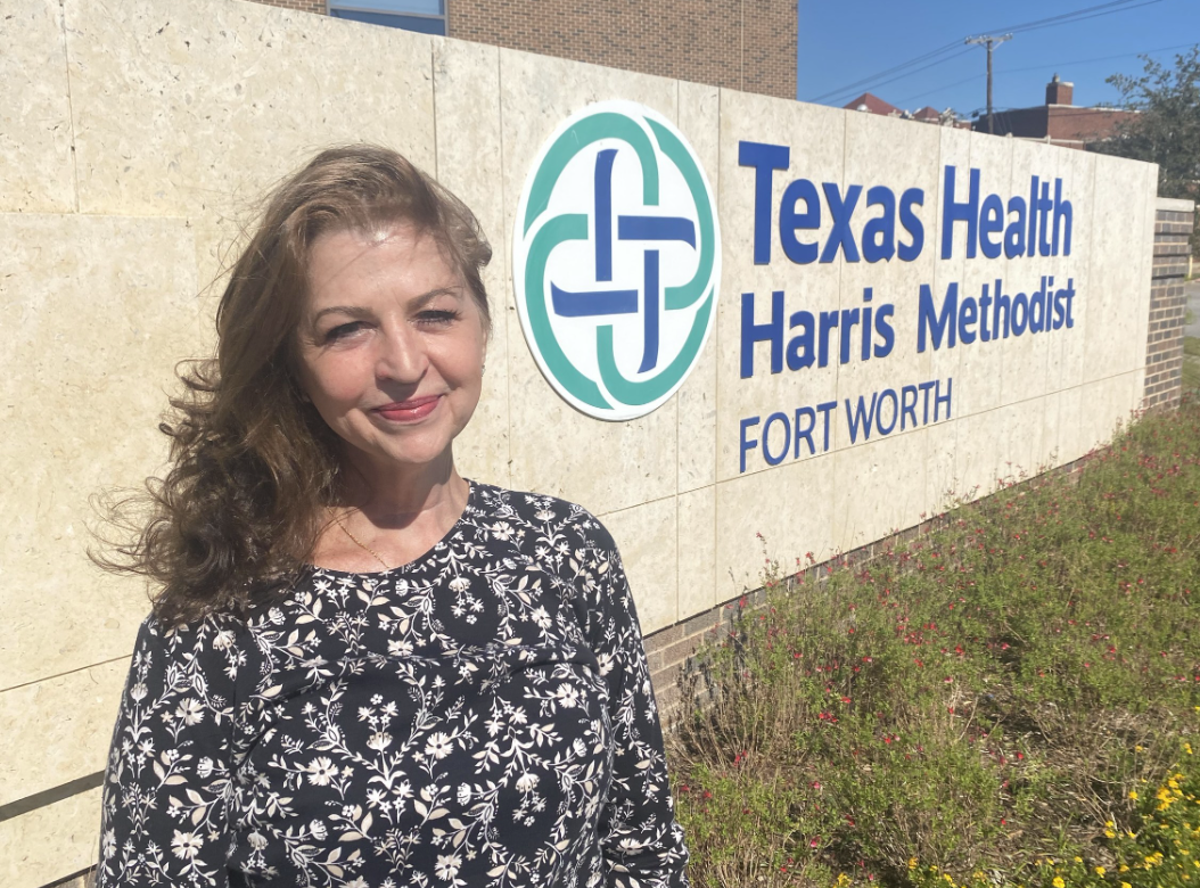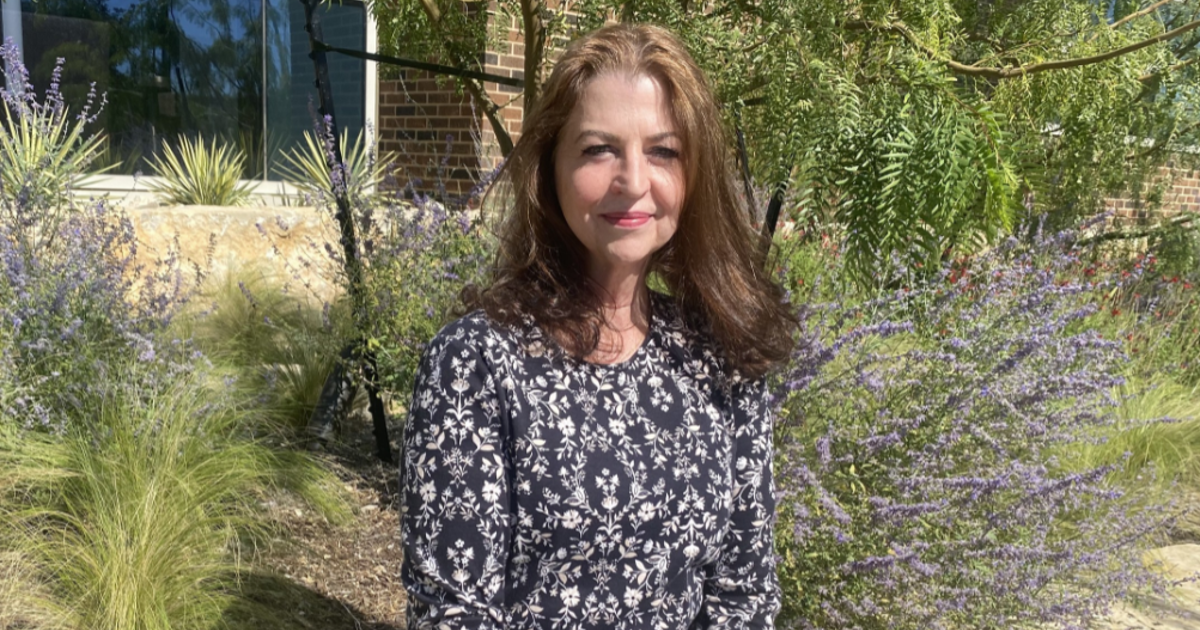Learning About Lung Cancer
- In January 2022, 61-year-old April Boudreau learned from an annual CT scan that doctors discovered a nodule on her right lung, which they quickly assumed to be cancer. Luckily, the tumor in her lung was detected early, allowing doctors to remove the cancer just hours later with a new robotic technology.
- Lung cancer is the second most common type of cancer and it can develop in both smokers and non-smokers, but people who smoke cigarettes are 15 to 30 times more likely to get lung cancer or die from lung cancer than people who don't smoke.
- There are several types of surgery for lung cancer, and the decision about which is best is based largely on the location of your cancer, its size and whether it has started to spread.
In January 2022, the 61-year-old Texan learned from an annual CT scan that doctors discovered a nodule on her right lung, which they quickly assumed to be cancer. Luckily, the tumor in her lung was detected early, allowing doctors to remove the cancer just hours later.
Read More
Following the procedure, the grandmother underwent minimally invasive surgery to remove the tumor, which was done while Boudreau was under a single anesthesia for the bronchoscopy.
Hours later she woke up from what she thought was only going to be a bronchoscopy and learned she no longer had cancer.
“You pinch yourself because you can’t believe it’s true. This was all so simple, with no radiation or chemo,” Boudreau, who was discharged from the hospital the following day, said, according to the Daily Mail.
Texas Health Fort Worth’s multidisciplinary thoracic oncology program is able to give patients, like Boudreau, a holistic approach to lung cancer with the help of robotic-assisted bronchoscopy technology and robotic minimally invasive surgery.
The robotic technology uses an ultra-thin catheter to reach and biopsy areas in hard-to-reach areas of the lung earlier. Then the cancerous tissue is taken out with small incisions and no trauma inflicted on the patient’s ribs.
There were only five minuscule incisions made during the procedures, which allowed Boudreau to heal quickly.
"I took pain pills for three days, and that's all I needed. Within three days later, I was just normal, walking around. I couldn't believe it," said Boudreau, who recalls her only symptom of lung cancer was when she occasionally felt “a little bit out of breath,” something she dismissed as a normal part of getting older.
Understanding Lung Cancer
Lung cancer, the second most common type of cancer, is the leading cause of cancer deaths for men and women in the United States. Diagnosis and treatment of the disease can be tricky since symptoms often don't appear until the cancer has spread.
An initial symptom, for example, could be as serious as a seizure if the lung cancer has already spread to the brain. But other symptoms can include increased coughing, chest pain, unexplained weight loss, shortness of breath, wheezing, losing your voice or persistent infections like bronchitis or pneumonia.
The two main types of lung cancer are non-small cell, which makes up 85 percent of cases, and small-cell. These types act differently and, accordingly, require different types of treatment.
Dr. Patrick Forde, a thoracic oncologist at Johns Hopkins Medicine, tells SurvivorNet about how distinguishing between the two types and their subtypes can be very beneficial.
What Happens When You've Been Newly Diagnosed With Lung Cancer
"Within that non-small cell category, there's a subtype called non-squamous adenocarcinoma, and that's the group of patients for whom genetic testing is very important on the tumor," he explains. "Genetic testing is looking for mutations in the DNA, in the tumor, which are not present in your normal DNA."
Surgery Options for Lung Cancer
There are several types of surgery for lung cancer, and the decision about which is best is based largely on the location of your cancer, its size and whether it has started to spread. A wedge resection is an option if the tumor is small and located on the outside of the lung. In this procedure, your surgeon removes a piece of the lung (in the shape of a wedge) and lung function is not affected.
By contrast, a lobectomy or a segmentectomy involves the removal of a certain segment of the lung (a lobe). During a pneumonectomy, however, the entire lung is removed.
Figuring Out Surgical Options for Lung Cancer Patients
There are several different ways to do lung cancer surgery. The standard operation used to be open surgery with a big incision in the chest and then spreading apart the ribs. But because of the pain after the operation and the lengthy recovery time, doctors are increasingly using less invasive operations including minimally invasive video-assisted thoracoscopic surgery (VATS) and robotic techniques.
Your surgeon will go over all of these options with you when planning your treatment.
Lung Cancer for Non-Smokers
Declining smoking rates have led to an improved outlook for lung cancer since cigarette smoking is the number one risk factor for the disease. In fact, the Centers for Disease Control & Prevention states that cigarette smoking is linked to about 80 to 90 percent of lung cancer deaths, and people who smoke cigarettes are 15 to 30 times more likely to get lung cancer or die from lung cancer than people who don't smoke.
It's important to remember, however, that even people who've never smoked before can still get lung cancer. The CDC reports that, in the United States, about 10 to 20 percent of lung cancers, or 20,000 to 40,000 lung cancers each year, happen in people who've never smoked.
"Some lung cancers are from unknown exposure to air pollution, radon, or asbestos," Dr. Raja Flores, system chair of thoracic surgery at Mount Sinai previously told SurvivorNet in a previous interview. "We also see more never-smokers with lung cancer who have a family history of it."
Radon is the second-leading cause of lung cancer. It's responsible for anywhere from 3 to 16 percent of cancer cases depending on the levels present in a given area, according to the World Health Organization, but smokers are still 25 times more at risk from radon than non-smokers.
Another possibility for the cause of lung cancer in a non-smoker can be second-hand smoke. The American Cancer Society estimates that about 7,000 adults die of lung cancer annually from breathing secondhand smoke.
Air pollution, family history, HIV or AIDs can also all impact the chances of a non-smoker getting lung cancer. No matter what, it's important to not rule out the disease just because you don't smoke a fact that Donna Hunting knows all too well.
Hunting was a non-smoker when she was diagnosed with lung cancer. But the active 54-year-old's cancer had progressed further given that she had stage four non-small cell lung cancer.
If You Have Lungs, You Can Get Lung Cancer Survivor Donna Hunting Shares Her Story
“That day was shattering to my family and to me," she previously told SurvivorNet. "It's not a smokers' disease. If you have lungs, you can get lung cancer."
Fortunately for Hunting, testing revealed that her tumors had a mutation in a specific gene called EGFR. This meant that doctors were able to give her a pill to block those mutations and effectively rid her body of the disease.
"After 50 days, miraculously, my PET scan showed no evidence of disease," she said.
Hunting took the drug for over a year, until it stopped working as well. Now she's on a different daily medication, but thanks to advancements in treatment she's able to live with the disease.
"Cancer is a part of my life now, but it isn't my whole life. I'm not letting cancer define me," Hunting said.
Contributing: SurvivorNet Staff
Learn more about SurvivorNet's rigorous medical review process.


